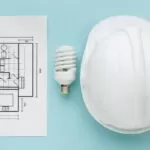As a vigilant building owner in the expansive state of Texas, managing your property’s electrical systems is a responsibility that demands attention to detail. One essential aspect of this oversight is understanding Electrical Panel Schedules for both high and low voltages. In this article, we will unravel the significance of Electrical Panel Schedules, explain why they matter, and how a clear understanding can contribute to the safety and efficiency of your property.
Table of Contents
Deciphering Electrical Panel Schedules:
Electrical Panel Schedules are detailed documents that outline the specifics of your building’s power distribution system. They serve as a roadmap, providing crucial information about the electrical panels, circuits, and devices within your property. In Texas, where properties vary from residential homes to large commercial structures, understanding these schedules is vital for efficient management and safety.
Components of Electrical Panel Schedules:
To grasp the significance of Electrical Panel Schedules, one must first understand their components. These schedules typically include a list of all panels within the building, specifying the circuits associated with each panel. Details about the connected devices, such as lights, outlets, and appliances, are also outlined, along with the corresponding voltages and amperages.

The schedules act as a comprehensive reference, offering a snapshot of your property’s electrical infrastructure. They are invaluable tools for both routine maintenance and troubleshooting, enabling quick identification of circuits and devices in need of attention.
Importance of High and Low Voltage Distinctions:
In the diverse landscape of Texas, where properties can range from single-family homes to multi-story commercial buildings, the distinction between high and low voltages becomes crucial. High-voltage circuits typically power larger equipment and systems, such as HVAC units or industrial machinery, while low-voltage circuits cater to lighting, outlets, and smaller appliances.
Understanding the separation of high and low voltages in Electrical Panel Schedules is essential for safety and efficient power distribution. This knowledge aids electricians and maintenance personnel in identifying the appropriate circuits during maintenance or when addressing electrical issues.
Safety and Compliance:
Safety is a paramount concern when it comes to electrical systems, and compliance with regulations is a non-negotiable aspect of building ownership in Texas. Electrical Panel Schedules play a pivotal role in ensuring safety and adherence to electrical codes. These schedules help verify that circuits are appropriately labeled, preventing confusion and reducing the risk of accidents.
During inspections or in the event of an emergency, clear and accurate Electrical Panel Schedules facilitate a swift response. Emergency responders and electricians can quickly locate and isolate specific circuits, enhancing overall safety and compliance with regulations.
Facilitating Routine Maintenance:
Routine maintenance is a cornerstone of ensuring the longevity and reliability of your property’s electrical infrastructure. Electrical Panel Schedules streamline maintenance activities by providing a structured overview of the entire system. Maintenance personnel can reference the schedules to identify circuits that require attention, plan efficient routes through the building, and perform tasks with precision.
In the fluctuating climate of Texas, where electrical systems may face additional challenges due to weather conditions, proactive maintenance is particularly crucial. Regular checks of the Electrical Panel Schedules help identify potential issues before they escalate, minimizing downtime and preventing costly repairs.
Efficient Troubleshooting:
In the event of an electrical issue, time is of the essence. Whether it’s a malfunctioning circuit, a tripped breaker, or an outage, quick and efficient troubleshooting is essential. Electrical Panel Schedules act as a detailed map, allowing electricians to navigate the system, locate the problematic circuit, and address the issue promptly.
This efficiency is especially vital in Texas, where weather-related incidents or other unforeseen challenges can impact electrical systems. The ability to swiftly identify and resolve issues contributes to the resilience of your property’s electrical infrastructure.
Collaboration with Electrical Professionals:
While understanding the basics of Electrical Panel Schedules is beneficial, collaboration with licensed electrical professionals is crucial for in-depth comprehension and effective management. Electrical professionals possess the expertise to interpret complex schedules, ensure accurate labeling, and provide recommendations for improvements or upgrades.
Building owners in Texas should view collaboration with electrical professionals as an investment in the safety and reliability of their property’s electrical systems. These experts can offer insights, conduct thorough inspections, and help optimize the efficiency of your electrical infrastructure.
Conclusion:
In conclusion, for building owners in Texas, a clear understanding of Electrical Panel Schedules for high and low voltages is a strategic endeavor. These schedules serve as essential tools for managing power distribution, ensuring safety, and facilitating efficient maintenance and troubleshooting. By recognizing the importance of high and low voltage distinctions, prioritizing safety and compliance, and collaborating with electrical professionals, building owners can navigate the complexities of their property’s electrical systems with confidence and efficiency.




